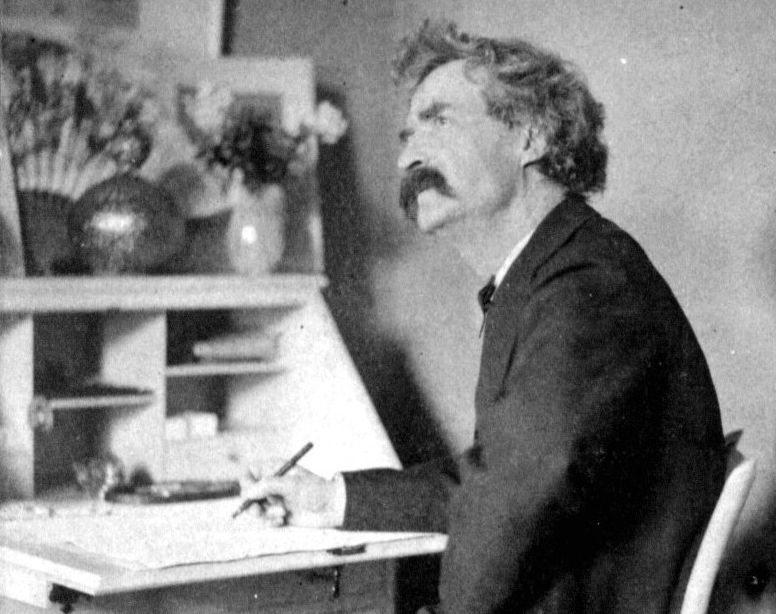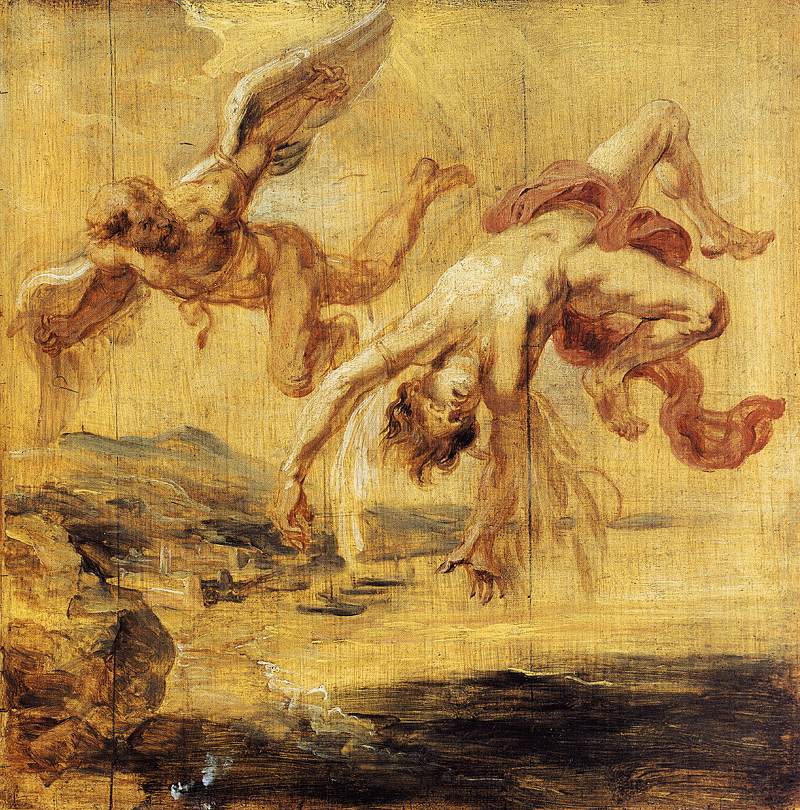< Return to Edgar Allan Poe Poems
The Happiest Day
The happiest day—the happiest hour
My seared and blighted heart hath known,
The highest hope of pride and power,
I feel hath flown.
Of power! said I? Yes! such I ween
But they have vanished long, alas!
The visions of my youth have been—
But let them pass.
And pride, what have I now with thee?
Another brow may ev’n inherit
The venom thou hast poured on me—
Be still my spirit!
The happiest day—the happiest hour
Mine eyes shall see—have ever seen
The brightest glance of pride and power
I feel have been:
But were that hope of pride and power
Now offered with the pain
Ev’n then I felt—that brightest hour
I would not live again:
For on its wing was dark alloy
And as it fluttered—fell
An essence—powerful to destroy
A soul that knew it well.
-Edgar Allan Poe
Enjoy Artistic Representations of “The Happiest Day” by Edgar Allan Poe

Mark Twain sitting at his desk in a pensive mood, representing Poe’s contemplation in this poem.

The Fall of Icarus by Peter Paul Rubens, 1636. Icarus’s fall represents Poe falling after relying on Pride and Power but that failing.
Listen to Readings of ” The Happiest Day”
Listen to Musical Interpretations of ” The Happiest Day” by Edgar Allan Poe
That’s it for readings of The Happiest Day by Edgar Allan Poe!
About Edgar Allan Poe
Edgar Allan Poe (1809-1849) published his first collection of poems, Tamarlane, and Other Poems, in 1827, when he was 18 years old. A tendency to run up debts (including for gambling) kept him in constant state of reinvention – college student, poet, short story writer, soldier/officer school, literary journal editor and critic.
The Poe who arises from Symons’ hand (his biographer in The Telltale Heart: The Life and Works of Edgar Allan Poe) is a man who first and foremost was determined to put Southern letters on the map, aiming to wrest control from the literary establishment in New York and New England (Poe aimed some rather pointed arrows at writers like Henry Wadsworth Longfellow). For his own writing, he wanted to be considered a poet. The poems were the important works; the stories were almost after-thoughts, almost dashed off primarily to raise funds. And he always needed money.
His personal life seemed to have stayed a general mess, but he had an enormous impact on both American and world literature. Consider the stories and poems that have been filmed, published, re-published, anthologized, celebrated and widely admired for more than 150 years: “Murders in the Rue Morgue,” “Fall of the House of Usher,” The Raven, “The Tell-Tale Heart,” Annabel Lee, “The Bells,” “Ulalame,” “To Helen.”
We associate Edgar Allan Poe with 19th century gothic. His stories are full of mystery, passion, horror, violence, death, and the supernatural. And yet his poems, especially “The Raven” and “Annabel Lee,” made him famous in pre-Civil War America and established his literary reputation.
Questions and mystery surrounded Poe’s own life and death, and continue even today – we may never know who left three roses and a bottle of cognac on his grave in Baltimore for decades until 2011 (alas, the “Poe Toaster” disappeared or died, to be seen nevermore).
You can read more about Poe’s biography in the articles Poets and Poems: Meeting Edgar Allan Poe and Forgotten Classics, The Telltale Heart by Julian Symons by Glynn Young, from which this biography was compiled.
I hope you enjoyed The Happiest Day by Edgar Allan Poe!
BUY ‘HOW TO WRITE A FORM POEM’ NOW!
